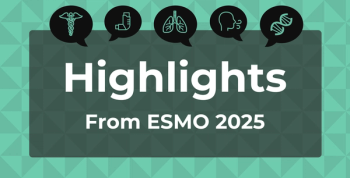
What Protects Children From Suicidal Ideation? Liking School, Having Parental Supervision
Risk factors for suicidal ideation and behaviors in children aged 9 and 10, however, include psychological issues, conflict within the family, and increased use of computers on weekends, especially for boys.
Strong parental supervision and having a positive relationship with school protects children aged 9 to 10 years from suicidal ideation, according to a new study released Thursday.
The analysis of nearly 8000 children found that although 8.4% of them reported suicidal ideation—defined as temporarily or regularly thinking about, considering, or planning suicide—less than 2 in 100 (1.3%), self-reported a suicide attempt. About 1 in 100 had past or current suicidal plans.
However, the report, published in
While “
The researchers based their findings on data from 7994 children (average age, 9.9 years,;53% male) taking part in the
Caregivers and children were independently asked about current wellbeing and suicidal history as well as personal, family, and social characteristics using questionnaires; the researchers quantified the associations using bootstrapped logistic regression. A majority (6854 children) had never expressed suicidal thoughts or behaviors.
But the low levels of agreement between caregiver and child reports “indicates problems with disclosure and awareness that should be considered when assessing suicide risk in young children,” the study said. The caregiver-reported (654 children) or child-reported (684 children) experiences included 198 cases where caregivers and children were in agreement on reports of suicide ideation.
Protective factors include children liking school and strong parental supervision, possibly because both assist in the development of identity, self-esteem, and resilience, the authors wrote.
Risk factors for suicidal ideation include increased time using computers or other screen-based devices on weekends (odds ratio [OR] 1.3; 95% CI, 1.2-1.7). The effect was more pronounced for boys, but the authors cautioned that more research is needed to understand whether the relationship between screen time and suicide ideation is causal or correlative.
Conflict within the family is another risk factor (OR, 1.4-1.8; 95% CI, 1.1-2.5), as are psychological problems (OR, 1.7-4.8; 95% CI, 1.5-7.4).
Interventions that assist the family, increased engagement with school, and psychological treatment should be optimized, and the researchers suggested that school-based awareness progrms could be the most successful with this population.
Increasingly, schools are stepping up their level of support in this area. For instance, in New Jersey last November, 2 small school districts placed special referendums on the ballot to increase mental health services in their districts;
In a statement, Sophia Frangou, MD, PhD, from the Icahn School of Medicine at Mount Sinai and co-leader of the research, said that “the robust associations shown in this study with psychological problems (mostly anxiety and depressive problems) and family conflict provide practitioners with important information as to how they can intervene to help children and their families.”
The National Suicide Prevention Lifeline is a hotline for individuals in crisis or for those looking to help someone else. To speak with a certified listener, call 1-800-273-8255.
Reference
Janiri D, Doucet GE, Pompili MP, et al. Risk and protective factors for childhood suicidality: a US population-based study [published online March 11, 2020]. Lancet Psychiatry. doi: 10.1016/S2215-0366(20)30049-3.
Newsletter
Stay ahead of policy, cost, and value—subscribe to AJMC for expert insights at the intersection of clinical care and health economics.







































